Birds have evolved to fill a great diversity of niches, living in vastly different habitats and having varied lifestyles. Thus, they come in many different shapes and sizes, from the tiny to the towering. This list gives you the lowdown on the biggest birds that currently grace the planet.
The great majority of these big birds belong to just one group – ratites. Ratites are all flightless and, with the exception of kiwis, are all long-legged, long-necked and large. The group contains the ostriches, rheas, cassowaries and emus that all feature on this list, but also the now extinct elephant birds and moa.
- Ostriches vs emus: what’s the difference between these large, striking flightless birds?
- Fierce, majestic and deadly: your ultimate guide to the world's biggest birds of prey
What was the largest bird ever?
Elephant birds are thought to have been the largest birds to ever exist, weighing over an estimated 500kg. The very tallest bird, however, was the South Island giant moa, a ratite from New Zealand that stood a whopping 3.6m tall.
Although enjoying a stable population for at least 40,000 years, these colossal birds were quickly wiped out when humans began to settle in Polynesia and realised they were a ready food source. Moa are thought to have gone extinct due to overhunting by around 1500CE.
Read on to learn about the living relatives of these extraordinary ratites, as well as a couple more beefy birds from other taxonomic groups. You can also learn all about the smallest birds in the world here.
The 10 biggest birds in the world (by maximum weight)
Common ostrich (Struthio camelus) 156.8 kg
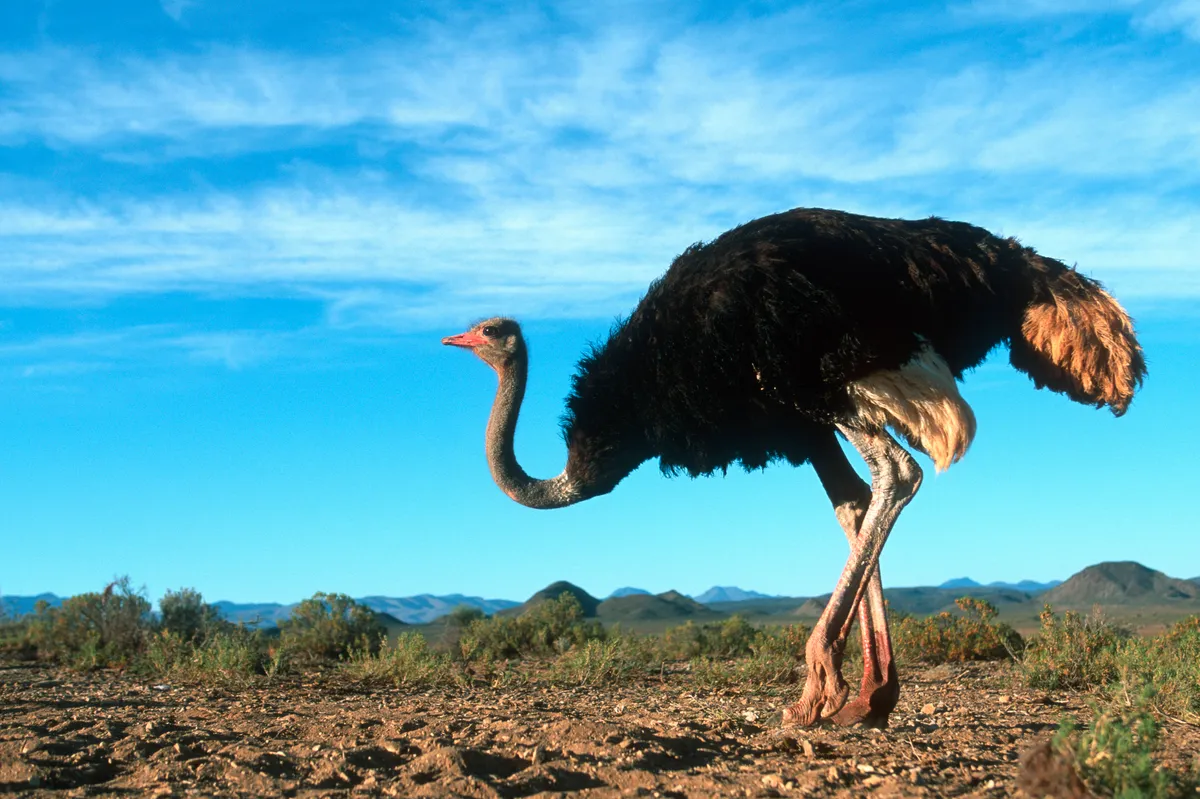
The largest on our list weighs as much as a piano and can reach an impressive height of up to 2.8m. The common ostrich, native to large areas of Africa, as well as introduced and feral in parts of Australia, is also the speediest living land bird with running speeds of up to 40mph, and it lays the largest eggs of any bird. Truly a record-breaker!
They are mainly herbivorous, feeding on shrubs, grass, flowers, and seeds, but they can still be pretty dangerous due to their powerful kicking legs. They kill around three people each year in South Africa. One famous (non-fatal) ostrich attack incident involved the musician Johnny Cash, who was slashed at by one of the birds he kept on his property.
Learn more fascinating facts about the ostrich
Somali ostrich (Struthio molybdophanes) 130 kg
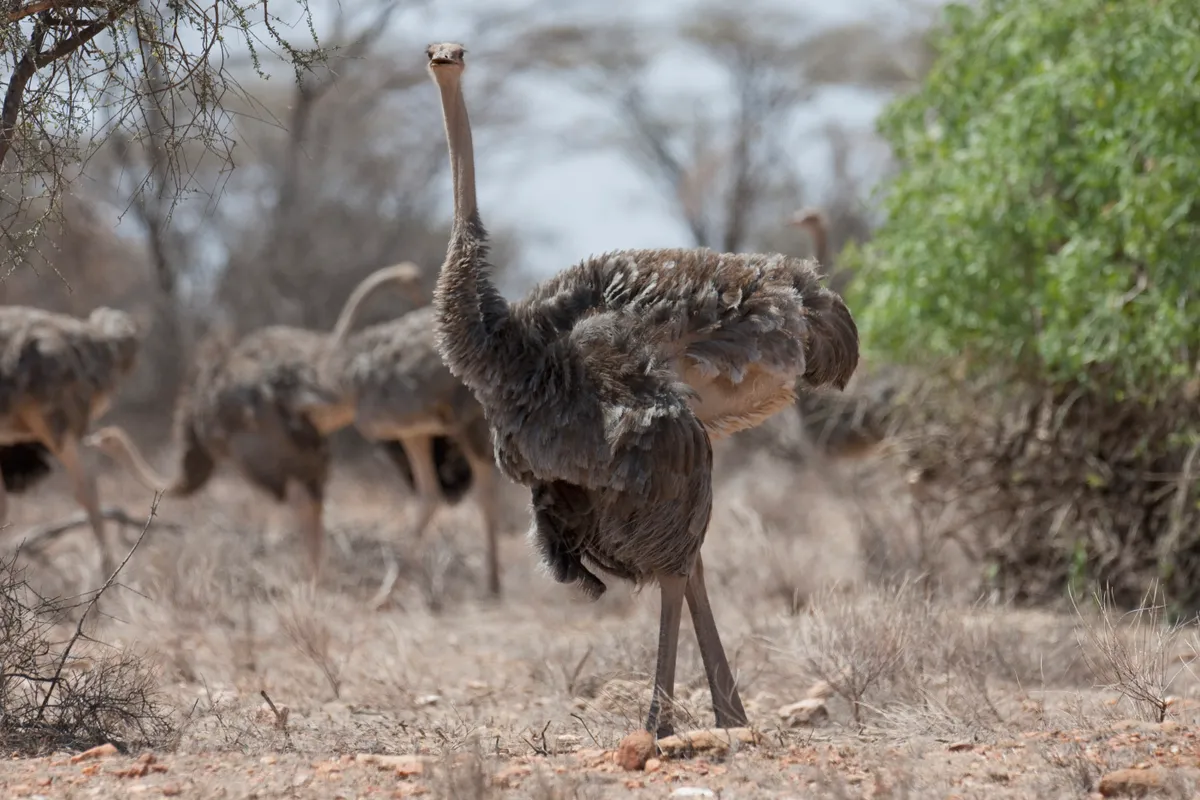
Once thought a subspecies of the common ostrich, but now recognised as its own distinct species, the Somali ostrich is on average slightly smaller than its record-breaking relative. It is native to the Horn of Africa in the easternmost part of the continent.
The two extant species of ostrich are a good example of 'allopatric speciation', wherein populations of a species are separated from each other by a geographic barrier so that they can no longer interbreed and eventually evolve into separate species. In this case, the geographic barrier is the East African Rift.
You can learn more about how speciation happens with our handy guide.
Southern cassowary (Casuarius casuarius) 85 kg
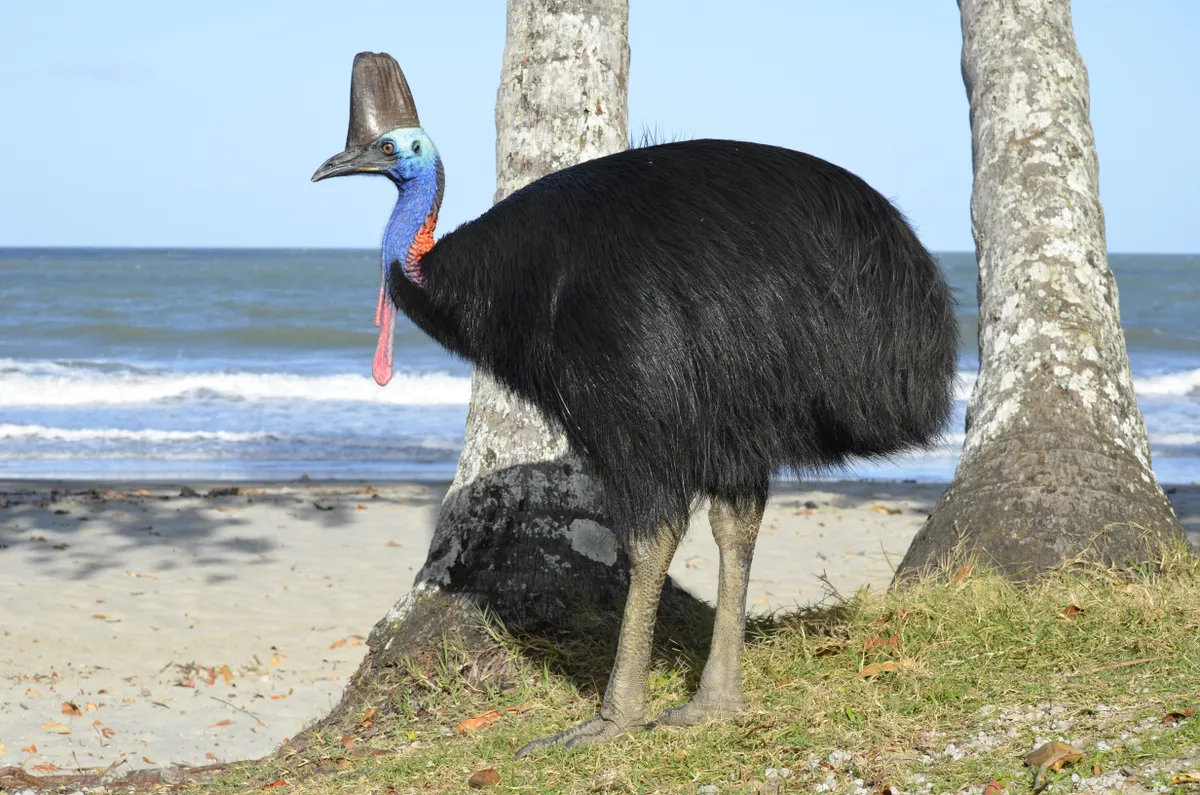
Although not as intimidating as the ostriches, the positively prehistoric-looking Southern cassowary (one of the world's weirdest birds) would still tower over a lot of people, at about 1.7m tall. Native to the rainforests of northeastern Australia, New Guinea, Indonesia and Papua New Guinea, they forage the forest floor for fallen fruits, fungi and insects. They are often heard before they are seen, with a distinctive deep booming call that will leave you thinking nervously of Jurassic Park.
Northern cassowary (Casuarius unappendiculatus) 75 kg

Very similar in look to its southern cousin, the Northern cassowary is slightly lighter on average and tends to have a single rather than a double wattle (the colourful flap of skin hanging off its neck).
This species is found only in the coastal swamp areas and lowland rainforests of northern New Guinea, as well as a few Indonesian islands.
The Northern is the most threatened of the three cassowary species, with hunting for bones, eggs and meat being the biggest concern.
Emu (Dromaius novaehollandiae) 70 kg

Lighter than the Southern and Northern cassowaries, but taller is the emu. This long-legged, long-necked bird can reach around 1.9m tall and is found only in Australia.
Emus have an interesting and mixed relationship with humans. Although historically economically valuable as a food and fuel source, an important source of meat for both indigenous Australians and early European settlers, and their fat used to light lamps, they have also come into conflict with people due to their crop-destroying tendencies.
In perhaps one of the most absurd examples of human-wildlife conflict ever, the Australian government declared war on the birds, deploying ex-soldiers with machine guns to take them down. This is known as the Great Emu War of 1932. The most surprising part? The emus won!
Emperor penguin (Aptenodytes forsteri) 46 kg

The first non-ratite on our list is the majestic emperor penguin. These burly penguins are found exclusively in Antarctica and have some fascinating adaptations that allow them to survive in this extreme land of ice and snow, where temperatures regularly fall below a glacial -60 degrees Celsius.
Providing vital insulation, they have a thick layer of sub-dermal fat and extremely dense feathers that stand on end to trap a layer of heat next to the body.
They also keep each other warm by forming dense huddles that may consist of several hundred individuals, rotating who gets to enjoy the warm core and who must suffer the frigid edges.
Learn all about these extraordinary birds with our emperor penguin guide
Greater rhea (Rhea americana) 40 kg
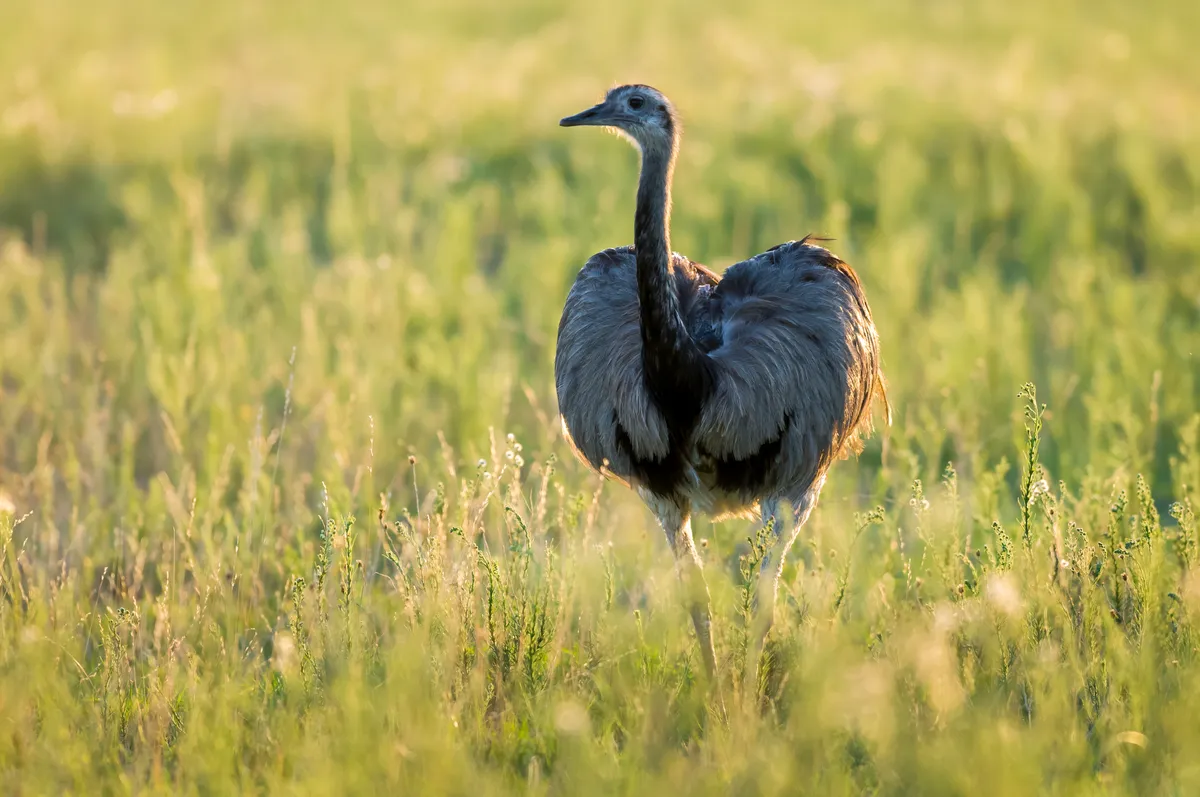
The largest extant native bird anywhere in the Americas, greater rhea can be found in Argentina, Bolivia, Brazil, Paraguay and Uruguay, as well as, strangely, there being a feral population established in northern Germany. This came about due to one male and five females escaping from a farm in the year 2000.
Although their native habitats include tropical grasslands, savanna and even desert, they seem to be doing surprisingly well in the German farmlands due to a lack of natural predators, with their population having risen to 566 individuals by 2018. Since then, hunting has been allowed to curb their destructive effect on crops.
Domestic turkey/wild turkey (Meleagris gallopavo) 39 kg (domestic)

Now we come to the only bird on our list that can fly. Although, admittedly, not particularly high or far. This tendency to stay close to the ground is what has led to them becoming such a popular and easily hunted species.
Once found in their millions from Canada to Mexico, wild turkey numbers quickly plummeted once Europeans began arriving in the Americas, the population dropping as low as 30,000 individuals in the 1930s.
Thankfully a better understanding of their lifecycle as well as the establishment of profitable domestic populations has led to a recovery, with current estimates placing the wild turkey population at around 7 million.
Commercially bred for intensive size gain over a short lifespan, domestic turkeys weigh far more than wild turkeys (females weigh up to 5kg and males weigh up to 11kg).
Dwarf cassowary (Casuarius bennetti) 34 kg
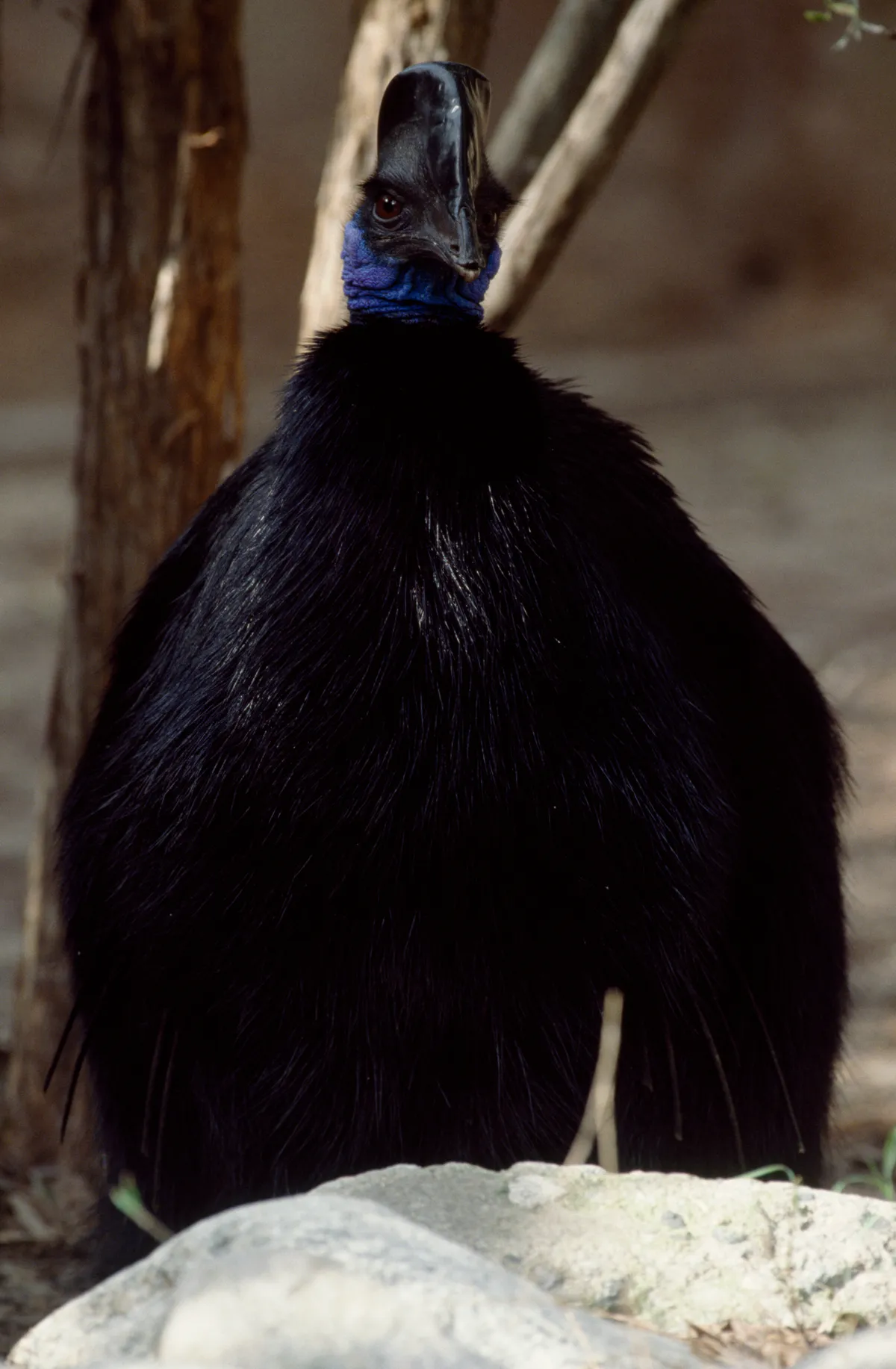
The smallest of the three cassowary species, the dwarf cassowary is also known as the mountain cassowary, due to its mountain forest habitats in New Guinea, New Britain, and Yapen Island, with a range elevation of up to 3000 metres. As well as being smaller, they are distinguished from their relatives by their lack of a wattle. They do however still have rather fetching bright blue-purple necks.
Lesser rhea (Rhea pennata ) 28.6 kg

The lesser rhea, found in the Altiplano and Patagonia regions of South America, is also known as Darwin’s rhea. This is because they were a species that helped start Darwin’s musings on the mechanism of evolution. Darwin encountered these large flightless birds during an expedition through Patagonia in 1833. He had already seen the larger Greater rhea but was very intrigued when that there was another distinct but very similar species living in the neighbouring region. He was puzzled as to why two such similar animals would coexist. This puzzle helped him to realise that species were not fixed and that they could arise from a common ancestor.
Learn about how evolution works from our explainer.
